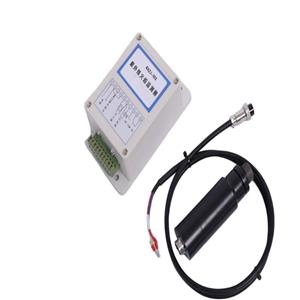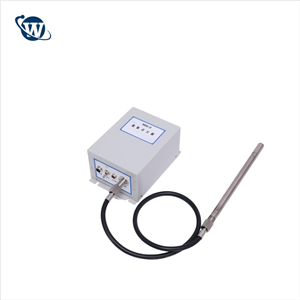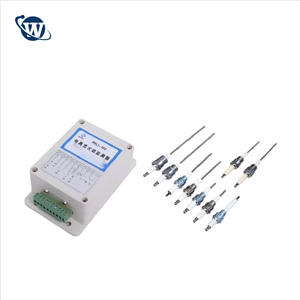Analysis of the Composition and Principle of the Boiler Ignition System
Analysis of the Composition and Principle of the Automatic Ignition Control System for Industrial Furnaces: The boiler ignition system consists of a high-energy ignition device, an ultraviolet flame detector, a flame detector cooling air system, an ignition gun propulsion device, and a quick shut-off valve. Among them, the high-energy ignition device and the ultraviolet flame detector are particularly important.
High - energy Ignition Device:
The boiler ignition system uses a high - energy ignition device, which belongs to a low - voltage capacitor discharge device. Its main structure consists of a high - energy igniter, a high - energy ignition gun, and a high - voltage shielded special ignition cable.
Its working principle is that the AC power of 220V at industrial frequency is transformed into a DC pulsating current through step - up rectification to charge the energy - storage capacitor. When the capacitor is fully charged, the discharge current is transmitted to the semiconductor nozzle of the ignition gun through the discharge tube, choke coil, shielded cable, etc., forming a high - energy arc spark. When the ignition device stops working, the remaining charge on the capacitor is discharged through the discharge resistor.
The boiler ignition system uses a high - energy ignition device, which belongs to a low - voltage capacitor discharge device. Its main structure consists of a high - energy igniter, a high - energy ignition gun, and a high - voltage shielded special ignition cable.
Its working principle is that the AC power of 220V at industrial frequency is transformed into a DC pulsating current through step - up rectification to charge the energy - storage capacitor. When the capacitor is fully charged, the discharge current is transmitted to the semiconductor nozzle of the ignition gun through the discharge tube, choke coil, shielded cable, etc., forming a high - energy arc spark. When the ignition device stops working, the remaining charge on the capacitor is discharged through the discharge resistor.
Ultraviolet Flame Detector:
The ultraviolet flame detector can continuously detect the flames of various gas - fired boilers for a long time and conduct safety monitoring of the boiler. Its main structure consists of two parts: a probe and a processor, and the probe and the processor are connected by a two - core twisted - pair shielded cable. Its working principle is that a quartz dust - proof lens is installed in front of the probe of the ultraviolet flame detector. The light signal emitted by the flame is transmitted to the UV photosensitive tube at the tail of the probe, and the UV photosensitive tube completes the photoelectric conversion. The signal transmission between the probe and the processor adopts the current transmission method to improve the anti - interference ability and is transmitted to the processor through the two - core twisted - pair shielded cable. The processor processes the signal transmitted from the probe through the matching circuit, Schmitt trigger, and monostable trigger circuit, discriminates whether there is a flame, and gives corresponding indications and outputs.
The ultraviolet flame detector can continuously detect the flames of various gas - fired boilers for a long time and conduct safety monitoring of the boiler. Its main structure consists of two parts: a probe and a processor, and the probe and the processor are connected by a two - core twisted - pair shielded cable. Its working principle is that a quartz dust - proof lens is installed in front of the probe of the ultraviolet flame detector. The light signal emitted by the flame is transmitted to the UV photosensitive tube at the tail of the probe, and the UV photosensitive tube completes the photoelectric conversion. The signal transmission between the probe and the processor adopts the current transmission method to improve the anti - interference ability and is transmitted to the processor through the two - core twisted - pair shielded cable. The processor processes the signal transmitted from the probe through the matching circuit, Schmitt trigger, and monostable trigger circuit, discriminates whether there is a flame, and gives corresponding indications and outputs.
The automatic ignition control system is mainly used to control the ignition operation of the boiler ignition equipment. It can achieve the automatic ignition of the boiler (accepting the programmed ignition command from the centralized control room), and can also perform local single - step operations on the ignition equipment, and feedback the working positions and working status signals of each unit equipment to the control room.




